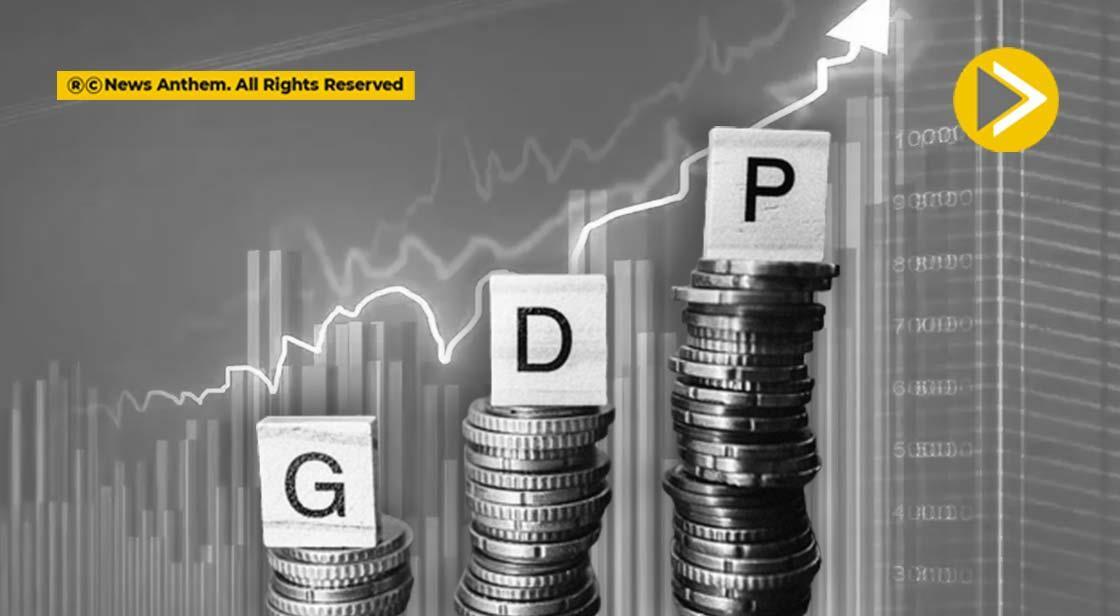India's GDP Growth Projected to Hit 6.6% in Q3 FY25: Reports

News Synopsis
India's gross domestic product (GDP) is expected to grow at 6.6% during the October-December quarter of the 2024-25 financial year (Q3 FY25), according to a recent report by the Bank of Baroda. While this marks a slowdown from the 8.6% growth recorded in Q3 FY24, the report emphasizes that the economy remains on a steady path, supported by growth in agriculture, government spending, and the services sector.
Government Capital Expenditure Boosts Economic Growth
A crucial factor contributing to economic stability is the government's increased capital expenditure. The report reveals that capital expenditure surged to 47.7% in Q3 FY25, a significant jump from 24.4% in Q3 FY24. This rise in public spending has driven construction activities across sectors such as:
-
Highways
-
Ports
-
Railways
The boost in infrastructure development has created employment opportunities and elevated household incomes, reinforcing the economic momentum despite the overall growth deceleration.
Sector-Wise Breakdown of GDP Growth
1. Agriculture Sector
The agriculture sector has shown remarkable progress, with growth expected to accelerate to 4.5% in Q3 FY25 — a significant improvement from 0.4% in Q3 FY24. The report attributes this growth to:
-
Improved foodgrain production
-
Strong rabi crop acreage
Better monsoon conditions and effective government policies have further strengthened the agricultural landscape, positively impacting rural incomes and demand.
2. Services Sector
The services sector remains a crucial pillar of India's economy, projected to grow at 6.9% in Q3 FY25 — slightly lower than 7.1% in Q3 FY24. Within the services sector:
-
Trade and hospitality are expected to expand at 6.9%, driven by the rising "experience economy," reflecting increased consumer spending on travel, dining, and leisure activities.
-
The financial sector is forecast to grow at 6.5%, supported by robust credit and deposit growth in banks and financial institutions.
3. Industrial and Manufacturing Sector
Despite the positive outlook for agriculture and services, the report highlights a slowdown in the industrial and manufacturing sectors due to a high base effect from the previous year:
-
Industrial growth is projected to decline to 5.9% in Q3 FY25, compared to 10.2% in Q3 FY24.
-
Manufacturing growth is expected to moderate at 6%, down from 11.5% in Q3 FY24. This dip is linked to lower corporate earnings in key sectors such as crude oil, steel, and automobiles.
-
Mining sector growth is also set to slow to 3%, a drop from 7.5% in the year-ago period.
Rural Demand and Financial Sector Performance
The report underscores signs of revival in rural demand, evident in the rising sales of tractors and two-wheelers. This indicates growing rural purchasing power, supported by:
-
Higher agricultural incomes
-
Increased government spending on rural infrastructure
Additionally, the financial sector continues to perform well, with notable credit and deposit growth. This reflects improved liquidity in the banking system and growing confidence among borrowers and investors.
External Challenges and Global Risks
While the domestic economy shows resilience, the report warns of global economic uncertainties that could impact India's growth trajectory. Key external risks include:
-
Geopolitical tensions
-
Trade disputes
-
Economic fragmentation
Moreover, pressures on the currency and trade sectors remain a concern. The report suggests that global headwinds could pose challenges to export growth and foreign investments, requiring proactive policy measures to mitigate risks.
Conclusion: A Balanced Economic Outlook
Despite the projected moderation in GDP growth to 6.6% in Q3 FY25, India's economy continues to demonstrate strength through strategic government investments, rising rural demand, and a resilient services sector. While industrial growth shows signs of slowing, the focus on sustainable development, coupled with proactive fiscal policies, positions the country for steady progress.
As the global economic landscape evolves, maintaining this balance between growth and stability will be crucial for India’s long-term economic health.
You May Like









